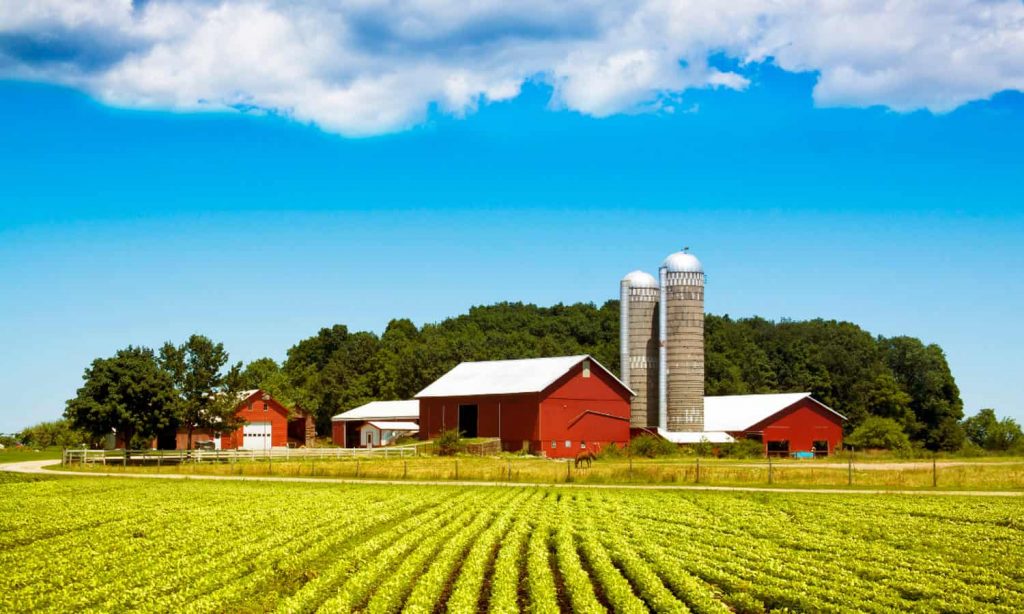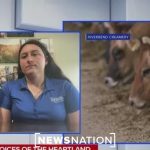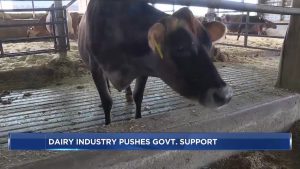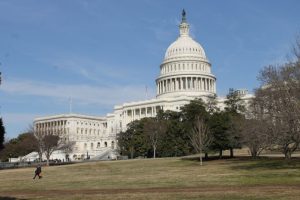
Election season is official. The disappearing American farmers will be waiting to see what happens.
My dad peered into the bucket and saw the milk was no good.
Looking at his cows lining the barn, their hooves stamping in the flickering light, he counted how many so far had mastitis: an infection that could sicken the animals and spoil their milk. It was more than a third − he’d have to dump the milk and the lost income would only get worse.
And this was before politics piled on.
Politicians court the Midwest. Meanwhile, American farms are disappearing.

This was my parents’ first year of marriage, as they and millions of farmers hurtled toward the 1980s Farm Crisis that decimated rural America. It’s one of many eras I found in my book on the disappearing American farmer that’s often mythologized as the fault of one person or issue. The truth is much worse: Both political parties have failed our farmers and every American dinner table.
Despite political parties courting the Midwest more than ever − Democrats touting farmland credibility with vice presidential nominee Tim Walz and Republicans leveraging rural strength as their main path − farmland has declined under both parties.
For a century America has lost 45,000 farms, on average annually, according to federal data. And the hollowing out of rural America bears a high cost for every American: food prices that rose far faster than the inflation everyone is debating.
There are many economic and social drivers, but history reveals mistakes by both parties.
During the Depression, the New Deal supported farms but began decades of government dependence prone to abuse and favoritism. In the 1950s, Republicans and Democrats presided over economic growth with too little thought for how small businesses like farms could thrive.
By the time of the Farm Crisis, both parties had long incentivized farms to get bigger or get out. It culminated in surging government-fueled debt that came just before the government instituted higher interest rates − taming inflation but also making farmers’ debt suddenly devastating.
By the 1990s and the recessions of the 21st century, farms felt left behind even before the Rust Belt.
The reality is both parties historically treated farmers as pawns in pursuit of cheap food − a worthy goal that, as our overriding policy, has let farms disappear to the point of disaster. Fewer farms and distribution channels partially drove soaring food prices after COVID-19, economists of many stripes note, and some warn that slowing productivity will mean higher food prices again.
Democrats too often failed to treat the market as a reality (instead leaning on government programs, then losing touch with rural areas) while Republicans have treated the market like too much of a religion (relaxing anti-trust policies until large companies dominated many industries and failing to recognize lagging innovation).
Often, the parties doubled down on each other’s mistakes.
American farmers are resilient, but there’s a lot more Congress can do
This isn’t to say farms lack support − both parties profess love, and some programs provide a legitimate safety net against weather. But nothing changes the fundamental problem: too little new opportunity for farms.
Meanwhile, those surviving farms (whether they’re getting bigger to do it or not) have shown a resilience we ought to harness. It’s how my parents saved their sickened herd on top of surviving drought conditions in their early years of marriage.
They took out limited debt − through a dairy equipment company − to install a pipeline to transport the milk in a more sanitary way.

Cutting costs and banding with neighbors during a tough harvest helped them avoid bank debt that crippled others in the Farm Crisis.
We should harness farmland resilience with innovative, bipartisan ideas, to address disappearing farms:
- Fuel private-sector innovation for new market opportunities with tax credits that incentivize private-sector research and development around “scale-neutral” technology that can work for farms of all sizes. And increase accountability and funding levels around similar federal research and development.
- End the false choice between unfettered free trade (ala the 1990s) and the stalled trade agreements of the past decade by pursuing smaller trade deals with tougher enforcement against cheating.
- Preserve competition across the economy with smart antitrust enforcement. This is surprisingly bipartisan, with tax-and-regulation-cutting Republicans and corporation-challenging Democrats agreeing on the need for competition in our markets (preferably in a sensible enough way to avoid upending them).
- Empower states and local communities to blaze unique paths for regional rural economies.

This requires less talk and more bipartisan action. It took both parties to fail farms, and it will take both − and everyone in between − to resurrect them.
Election season is official. The disappearing American farmers will be waiting.
Brian Reisinger is a writer and public affairs consultant who grew up on a family farm in Sauk County, Wisconsin. His debut book, “Land Rich, Cash Poor: My Family’s Hope and the Untold History of the Disappearing American Farmer,” was released Aug. 20. Follow him on Twitter: @BrianJReisinger
You can now read the most important #news on #eDairyNews #Whatsapp channels!!!
🇺🇸 eDairy News INGLÊS: https://whatsapp.com/channel/0029VaKsjzGDTkJyIN6hcP1K
























